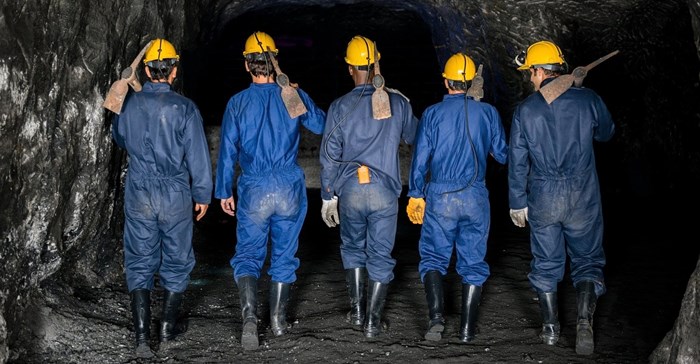South African mining companies are struggling to ramp up production in response to improved commodity prices due to structural constraints such as the cost and unreliability of electricity supply.

Image source: Getty/Gallo
"We know that the South African mining industry has significant economic and transformational potential. Unlocking this potential will require a concerted effort from all stakeholders to address the structural and policy constraints that are negatively impacting the performance of an industry which remains the flywheel of the South African economy,” says Henk Langenhoven, chief economist at the Minerals Council South Africa.
The council launched its Facts and Figures 2019 Pocketbook at the Investing in Africa Mining Indaba 2020.
Last year, production in the mining sector contracted by 2.8% on 2018. Although mining production saw some short-term improvement during the latter part of the year, the improvements were not strong or sustained enough to revise the outlook. Mining production has not improved significantly since 2009. Structural and logistical constraints such as limited rail and harbour capacity, the increasing cost of and disruptions in electricity supply and, industrial action and community unrest are the main contributing factors.
Costs
Rand commodity prices for South Africa’s four major mining commodities were particularly volatile with mining production slow to respond to better prices due to the structural constraints outlined.
Relentlessly rising input costs for mining in South Africa continues to be a threat to the sustainability of the sector. The Minerals Council estimates that input cost inflation for the mining sector was 7.6% during 2019, 2.9 percentage points above the national average production inflation rate. Rising electricity prices are a critical concern to the South African mining industry, while the sector depends directly and indirectly on government supplied infrastructure and services, amounting to R100bn or 45% of intermediary input costs.
During 2019, the mining industry paid R8bn for water (4% of input costs), R22bn for electricity (10% of input costs), R71.6bn for transport and storage which include harbours, rail and road (32% of input costs) and spent R34.6bn on housing (22% of wages). The cost of government supplied goods and services rose two percentage points faster than the headline consumer price index, and in some instances four percentage points higher than private sector induced cost escalation.
While employment levels stabilised during 2019, the small gains registered during 2019 stagnated towards the end of the year.
Gross fixed investment showed some improvement since the middle of 2018, following a period of stagnation from 2007, and a major decline between 2013 and a lower turning point in 2018. Net fixed investment after depreciation followed a similar trend, but at a lower level.
Major contribution
Notwithstanding the manifold challenges the industry is facing, mining continued to make a major contribution to the South African economy. In 2019, the mining industry:
- contributed R360.9bn to GDP (2018: R350.8bn)
contributed R94.7bn to fixed investment (2018: R94.7bn)- sold R538.9bn in primary mineral sales (2018: R475bn)
- exported R348.2bn in sales (2018: R312bn)
- paid R8.6bn in royalties (2018: R7.6bn)
- paid R24.3bn in taxes (2018: R22bn)
- paid R32.9bn in value added tax in terms of net output
- paid R16m in transfer duties
- employed 454,861 people
- paid employees R135.9bn (2018: R134.5bn) and contributed R22.7bn (2018: R21) to PAYE on behalf of employees












































